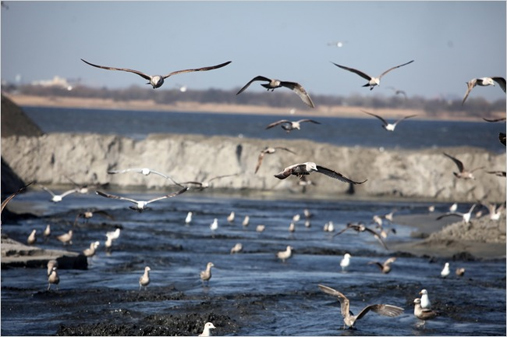Restoration of marsh islands in Jamaica Bay
The New York Times features a long-term partnership between the National Park Service and the US Army Corps of Engineers to restore the rapidly disappearing salt marsh islands in Jamaica Bay, the 26-square-mile lagoon bordered by Brooklyn and Queens. Now comprising 800 acres altogether, the series of islands in the Bay spanned more than 16,000 acres a century ago. As part of a larger project to restore parts of the Hudson-Raritan Estuary, and especially Upper and Lower New York Bay, the Army Corps is importing rock, clay, sand, and silt dredged from the widening of the Panama Canal to shore up Jamaica Bay’s islands and help re-establish plant and animal habitat.
The article also offers a good, brief environmental history of Jamaica Bay, including early 20th century plans to make it into a major seaport and mid-20th century top-down conservation efforts that led to the creation of Gateway National Recreation Area, along the bay’s coast, in 1972. Still, over half of the bay’s salt marsh has been lost since the 1950s, and many migratory birds and fish species have disappeared. Contributors to environmental degradation have been contamination from waste treatment plants, historic landfill waste seepage, highway runoff and airplane fuel from jets at JFK Airport.
Current restoration work has started on one island, Elders Point, where the Army Corps estimates that 42 acres of wetlands have been restored, with another 34 acres expected by the end of the year. Another restoration effort on the island called Yellow Bar Hassock is being prepared.





